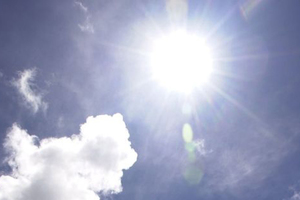High temperatures forecast for parts of England prompts heat-health warning
Public Health England issues reminder to check up on vulnerable people in hot weather.

With high temperatures forecast for London, the Southeast of England and the East of England, Public Health England (PHE) has asked people to remember to check up on those who are vulnerable in hot weather.
Over the next few days, temperatures in parts of the affected regions could reach close to 31°C. Older people who live alone, those self-isolating and people with underlying health conditions are at greater risk in spells of hot weather.
Ishani Kar-Purkayastha, Consultant in Public Health at PHE, said:
“Temperatures will feel very warm in the Southeast of England, London and the East of England, with localised pockets of high temperatures in some parts.
“People recovering from COVID-19 at home, older people and people with underlying health conditions will be more vulnerable during this hot spell.
“If you’re able, ask if your friends, family or neighbours need any support. The most important advice is to ensure they stay hydrated, keep cool and take steps to prevent their homes from overheating.
“Follow guidance on COVID-19 at all times, remember the ‘Rule of Six’, and when using public cool spaces including shaded outdoor spaces, do so considerately.”
Frank Saunders, Met Office Chief Meteorologist, said:
“England will be sunny with temperatures widely above 25°C. It’ll turn hot in southern and eastern areas with temperatures reaching around 30°C in a few spots, possibly 31°C on Tuesday.
“On Wednesday, there will be plenty of sunshine in southern areas and temperatures in the mid- possibly high-20s°C.”
To enjoy the sun while staying safe:
- drink plenty of fluids and avoid excess alcohol. Everyone is at risk of dehydration in hot temperatures, but babies, children and older people are particularly vulnerable
- stay cool indoors: open windows when the air feels cooler outside than inside; shade or cover windows exposed to direct sunlight; move to a cooler part of the house, especially for sleeping
- slow down when it’s hot: exertion heats up our bodies so plan any strenuous activities (such as exercise and gardening) outside the hottest time of the day, typically 11am to 3pm
- cool your skin with water. You could use a cool wet sponge or flannel, cool water spray, cold packs around the neck and armpits, or a cool, wet sheet
- stay connected and up to date with the weather forecast. Knowing the forecast can help you plan ahead and adapt what you’re doing
- dress appropriately for the weather – wear a hat, and light, loose cotton clothes
- protect yourself against the sun’s radiation by applying sun screen and monitoring the real-time UV index
- eat salads and fruit – these foods contain more water so can help keep you hydrated
For more information on the common signs and symptoms of heat exhaustion and heatstroke, visit NHS.UK.
Read our COVID-19 and summer temperatures blog for more advice on how to stay well in hot weather.